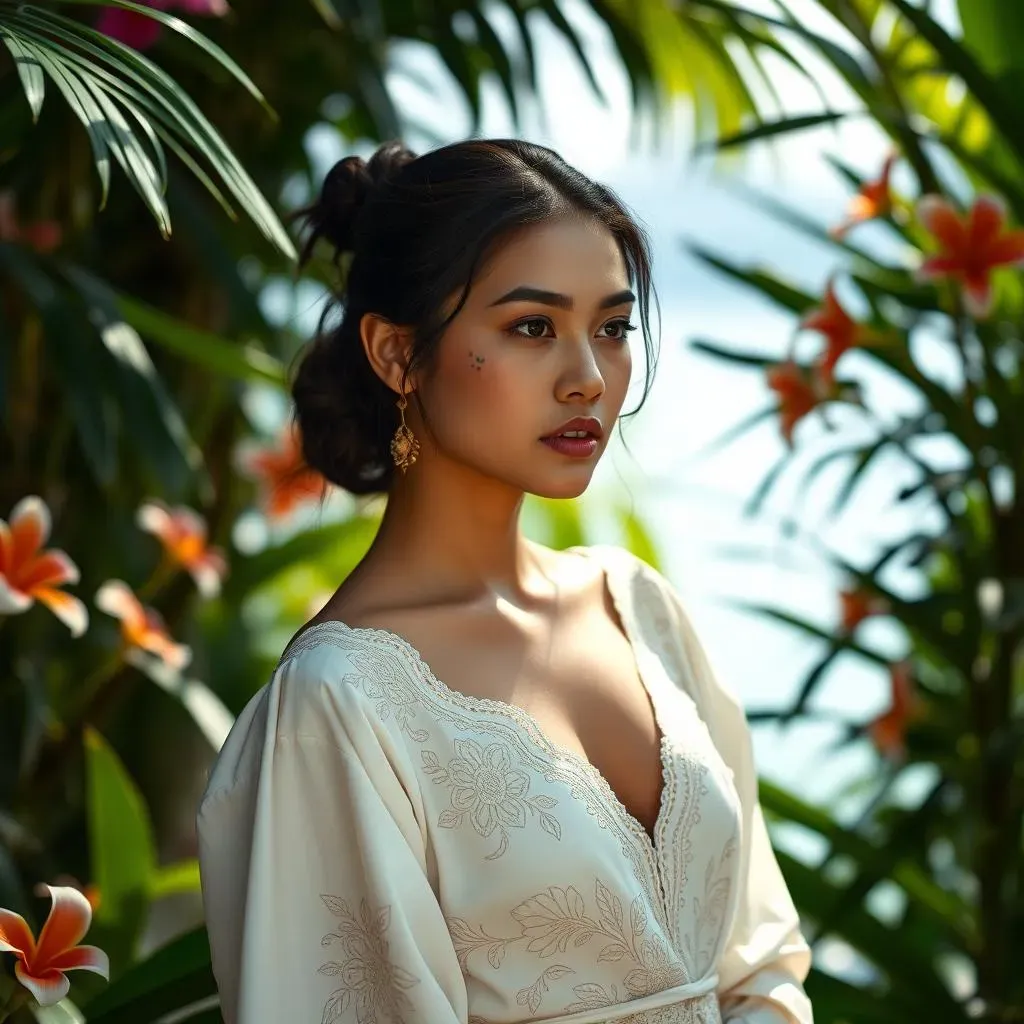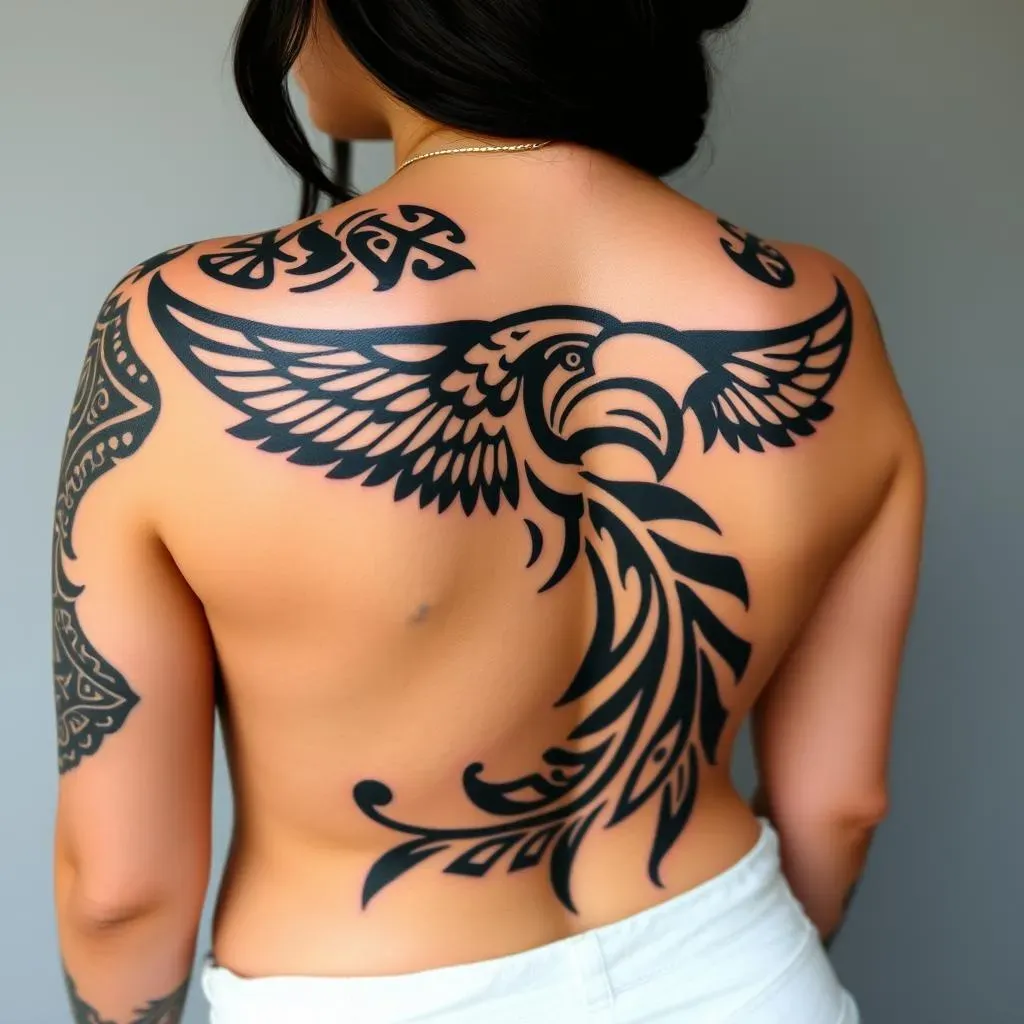Table of Contents
Ready to explore the captivating world of tribal tattoos for women? This article serves as your comprehensive guide to understanding, choosing, and caring for these powerful symbols of self-expression. We'll journey through the rich history and cultural significance behind tribal tattoos, examining the diverse styles and meanings that resonate with women around the globe. From intricate designs and symbolic motifs to ideal placement and aftercare tips, we'll cover everything you need to know before taking the plunge. We'll also delve into the crucial aspect of cultural sensitivity, ensuring you approach this art form with respect and understanding. Whether you're a seasoned tattoo enthusiast or a curious newcomer considering your first piece, this exploration of tribal tattoos for women will empower you to make informed decisions and create meaningful body art that reflects your unique identity and story. Prepare to be inspired and discover the perfect tribal tattoo to express your inner strength and beauty.
Exploring the World of Tribal Tattoos for Women

Exploring the World of Tribal Tattoos for Women
A Rich History of Symbolic Ink
Tribal tattoos aren't just pretty pictures; they're powerful narratives etched onto skin. For centuries, women in various cultures have used these tattoos to tell their stories – marking rites of passage, signifying social status, showcasing strength, or honoring ancestors. Think of the Maori women of New Zealand, their intricate *Ta Moko* designs reflecting lineage and identity. Or the indigenous women of various Polynesian islands, their tattoos reflecting their connection to the earth and sea. These aren't fleeting trends; they're living legacies, passed down through generations, carrying deep cultural weight.
These aren't just decorations; they're powerful statements about identity, belonging, and resilience. The designs themselves often hold symbolic meaning, representing animals, celestial bodies, or geometric patterns that carry specific cultural significance. Understanding this history is key to appreciating the artistry and power of tribal tattoos for women.
Culture | Tattoo Style | Common Symbolism |
|---|---|---|
Maori (New Zealand) | Ta Moko | Lineage, status, identity |
Polynesian | Varied styles | Connection to nature, ancestors, spirituality |
Native American | Varied styles | Clan affiliation, spiritual beliefs, personal achievements |
Modern Interpretations and Personal Expression
While respecting the origins is crucial, modern women are reimagining tribal tattoo designs, blending traditional aesthetics with personal expression. It's about finding a design that resonates with your own story, beliefs, and aspirations. Perhaps you're drawn to the fierce strength of a wolf, the graceful flight of a bird, or the intricate patterns of a flower – each choice speaks volumes about your individuality.
The beauty of modern tribal tattoos lies in their versatility. You can choose from classic designs or work with a skilled artist to create a unique piece tailored to your vision. Consider incorporating elements that are personally meaningful – dates, initials, or symbols that represent your passions and values. The possibilities are endless, allowing for a truly personalized and expressive piece of body art.
- Incorporate meaningful symbols
- Customize traditional designs
- Work with a skilled artist for a unique piece
Choosing the Right Tribal Tattoo for Women: Placement, Design, and Meaning

Choosing the Right Tribal Tattoo for Women: Placement, Design, and Meaning
Finding Your Perfect Design: Style and Symbolism
So, you're ready to choose your tribal tattoo? Awesome! But before you jump in, let's talk design. Tribal tattoos are incredibly diverse. Think about what speaks to you. Do you love the bold lines and geometric shapes of Polynesian designs? Or are you drawn to the flowing curves and intricate details of Maori *Ta Moko*? Maybe Native American styles, with their animal motifs and symbolic patterns, are more your vibe. The key is to find a style that resonates with your personality and aesthetic. Don't just pick something because it's trendy; choose a design that truly reflects who you are.
Once you've settled on a style, consider the symbolism. Many tribal designs hold deep cultural meaning. A bird might represent freedom, a wolf might symbolize loyalty, or a flower could signify beauty and growth. Researching the symbolism of different designs can add a powerful layer of meaning to your tattoo. Remember, this isn't just about aesthetics; it's about creating a piece of art that tells your story.
- Research different tribal styles
- Consider the symbolism of various designs
- Choose a design that reflects your personality
Placement: Where Your Tattoo Will Shine
Now, let's talk placement. Where you choose to place your tattoo significantly impacts its overall look and feel. A large, intricate design might look stunning across your back or shoulder, while a smaller, more delicate piece could be perfect for your wrist or ankle. Think about how much skin you want to cover and where you feel most comfortable showcasing your art. Consider your body type and how the design will interact with your natural curves and contours.
Also, think about visibility. Do you want your tattoo to be easily visible, or would you prefer something more discreet? The placement you choose will determine how often your tattoo is seen, and how much of a statement it makes. Ultimately, the best placement is the one that feels most right for you, that allows the design to truly shine. Don't be afraid to experiment with different placement options before making your final decision.
Placement | Pros | Cons |
|---|---|---|
Back | Large canvas, less sensitive area | Can be difficult to see yourself |
Wrist | Visible, delicate | Smaller canvas, more sensitive area |
Rib cage | Unique, visually striking | Very sensitive area, can be painful |
Tribal Tattoos for Women: Care, Aftercare, and Cultural Sensitivity

Tribal Tattoos for Women: Care, Aftercare, and Cultural Sensitivity
Proper Tattoo Aftercare: Keeping Your Ink Vibrant
So, you've got your stunning tribal tattoo! Congratulations! Now, the crucial part: aftercare. Following your artist's instructions is paramount. This usually involves keeping the tattoo clean and moisturized, avoiding direct sunlight and harsh chemicals, and resisting the urge to pick at any scabs. Think of it as tending a delicate garden; gentle care ensures vibrant blooms. Proper aftercare prevents infection and helps the ink heal beautifully, maintaining its rich color and sharp lines for years to come.
Ignoring aftercare is like neglecting a precious plant; it can lead to fading, scarring, or even infection. Use a gentle, fragrance-free soap and lukewarm water to cleanse the area. Pat it dry, never rub. Apply a thin layer of the recommended ointment, and avoid tight clothing that could irritate the healing skin. Patience is key; the healing process takes time, and rushing it can lead to problems. Remember, your tattoo is an investment, and proper aftercare is the best way to protect your investment.
Day | Aftercare Steps |
|---|---|
1-3 | Gentle cleansing, thin layer of ointment, avoid sun exposure |
4-7 | Continue cleansing, switch to unscented moisturizer, avoid tight clothing |
7+ | Continue moisturizing, protect from sun with sunscreen |
Cultural Sensitivity: Respecting Traditions
Choosing a tribal tattoo is a significant decision, extending beyond aesthetics. It's crucial to approach the process with respect for the cultural origins of the design. Avoid appropriating designs without understanding their meaning and significance. Researching the history and symbolism behind your chosen design is vital. If you're unsure about a specific design or its cultural implications, consult with an expert or artist familiar with the relevant culture. Remember, these aren't just patterns; they're deeply rooted in history and tradition.
Respecting the cultural heritage associated with tribal tattoos is not just polite; it's essential. It prevents the trivialization of significant cultural symbols and avoids causing offense. Engage with the culture respectfully, and if possible, support artists and communities who preserve and promote these traditions. Authenticity and respect should always guide your choices. When in doubt, do your research, ask questions, and choose designs that reflect a genuine understanding and appreciation for the culture's heritage.
- Research the cultural origins of your chosen design.
- Consult with experts or artists familiar with the culture.
- Support artists and communities who preserve these traditions.
- Avoid appropriating designs without understanding their significance.